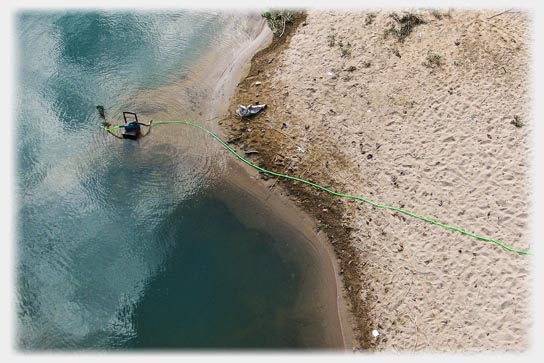
|
Emergence
What happens when we look at a scene which is strange to us? First it needs to be noted that we are much poorer than we like to think at noticing what is happening in front of us. The delightful illustrations of this point by the experimenters Simons and Levin showed how normal this 'change blindness' is.
A male researcher stopped strangers and asked for simple directions, during the conversation two men carrying a large board walked between the research and the subject, so preventing the subject from seeing the researcher for a couple of seconds, behind the board one of these two men swapped places with the researcher and then continued the conversation with the subject as though he had been the original questioner. Few subjects noticed the change of person. What matters is attention. Attention is the directing of our minds, our consciousness, towards an object or situation, and once we have attended we can bring all our past experiences and memories into play. But until we do so our acuity is very restricted. With familiar objects we can compare how they were with how they are now, indeed Gray argues persuasively that that is the central work of consciousness: that it is functionally a comparator.
What happens with something that is new to us? Often the answer is nothing, we simply cannot see what is truly novel: an object which is mundane, although novel, easily escapes us. Directed towards it we search for similarities. Such direction may be given by a person indicating a link to us, but often it must be the new object or its context that draws us directly. If the process does get started it relies on finding an element that is familiar. In the picture above what did you notice first, clouds, water, sand, the pipeline? The the first elements may call in others, the clouds become reflections, the sand shows the river, or the pipe leads us to the chair. Then the whole picture can resolve and reveal its unfamiliar viewpoint. This sense of revealing, being able to see, of emerging, is the critical point. Once they have so emerged objects gather to themselves memories and associations. Until they have such connections the object may be, as it were, completely transparent, and impossible to see, but once seen we cannot return to not seeing them: once lost such transparency cannot be regained.
Emergence denotes the movement from being transparent to being substantial, from being novel to being familiar, from being unconnected to having a place in our conceptual networks. When an 'object' (in a wide sense of the word) emerges it becomes a phenomenon - a word coming to us from the Greek meaning 'appears to us', or 'is seen by us'. This process conjures a clearing in a jungle. From the darkness of the trees (into which we cannot see) we start to distinguish an animal. It emerges blinking in the light of the clearing, then we see it for what it is, we can comprehend it in the light of consciousness.
Gently pushing this metaphor, and seeing the movement out of the darkness into the light as a journey, then it is the journey out of the noumena and into the phenomena, out of the darkness of the unknown, into the light of consciousness. What we see, once we see anything, is the very end of that journey, and we can never see back to its origin; we do, however, strive to peer back along its route; to catch glimmers in that darkness. Catching such glimpses seems to be at the heart of meditation. When meditating and trying to relinquish our entanglements with the past and future, we begin to retrace the steps back down that path which the thought has travelled from its origins in that jungle.
References
- Simons, D. J. & Levin, D. T. (1998) Failure to detect changes to people during real-world interactions. Psychonomic Bulletin and Review, 5, 644-9 (see Gray p. 94)
- Gray, Jeffrey (2004) Consciousness: creeping up on the hard problem. OUP
17th September 2014 ~ 28th July 2015